Richard Diebenkorn: The Catalogue Raisonné of Prints
The definitive resource of prints by the American painter, draftsman, and printmaker
May 20, 2025
Berkeley, CA
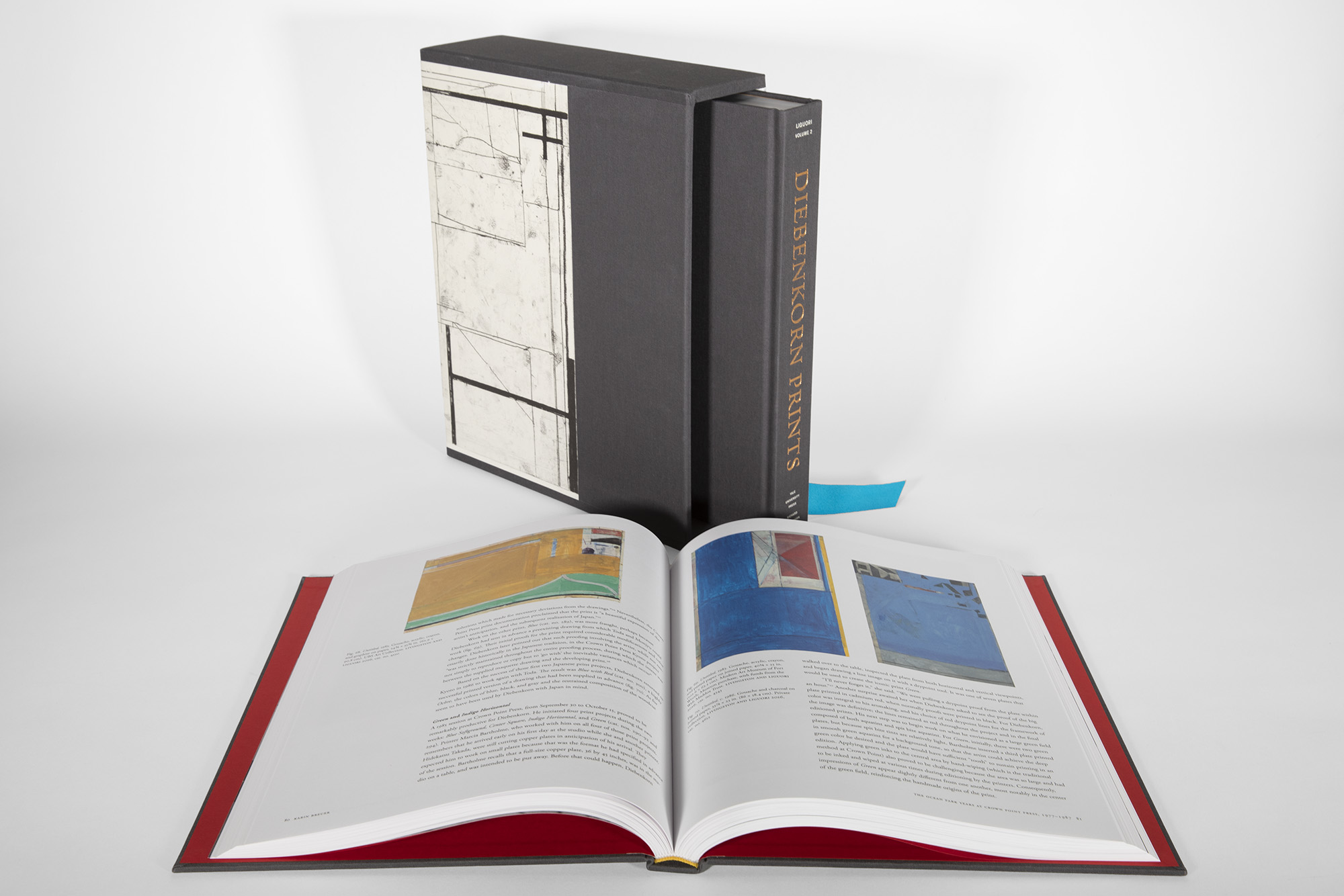
The Richard Diebenkorn Foundation is very pleased to debut Richard Diebenkorn: The Catalogue Raisonné of Prints. Edited by Andrea Liguori, Executive Director of the Richard Diebenkorn Foundation, and published by Yale University Press, the resource is the definitive record of the distinguished American artist’s print output in lithography, woodcut, monotype, etching, and intaglio. The lavish, two volume, more than 650 page publication includes new scholarship, nearly 1,000 significantly scaled images, and a detailed, richly illustrated chronology of Diebenkorn’s printmaking years.
Richard Diebenkorn (1922–1993) was highly accomplished in printmaking and worked with professional print shops over a period of more than 30 years, 1962 to 1992, beginning with his first works with the late master printer and publisher Kathan Brown at Crown Point Press. As a student in the 1940s Diebenkorn was introduced to printmaking at San Francisco Art Institute and went on to make his first monotypes in the early 1950s in Albuquerque.
“A draftsman and a painter, printmaking came to Richard Diebenkorn so naturally and beautifully,” said Liguori, who served as co-editor with curator Jane Livingston for Richard Diebenkorn: The Catalogue Raisonné (Yale University Press, 2016), the four volume, 2,000 page reference containing more than 5,000 of the artist’s unique works, including sketches; drawings; paintings on paper, board, canvas; and sculptural objects. Liguori added that printmaking often nourished the artist’s efforts in painting and provided a separate path for exploring alternate materials and techniques. In fact, he “often turned to the medium to problem solve and explore, and he took on printmaking each decade from the 1940s through the early 1990s, ultimately achieving unparalleled mastery of the medium.”
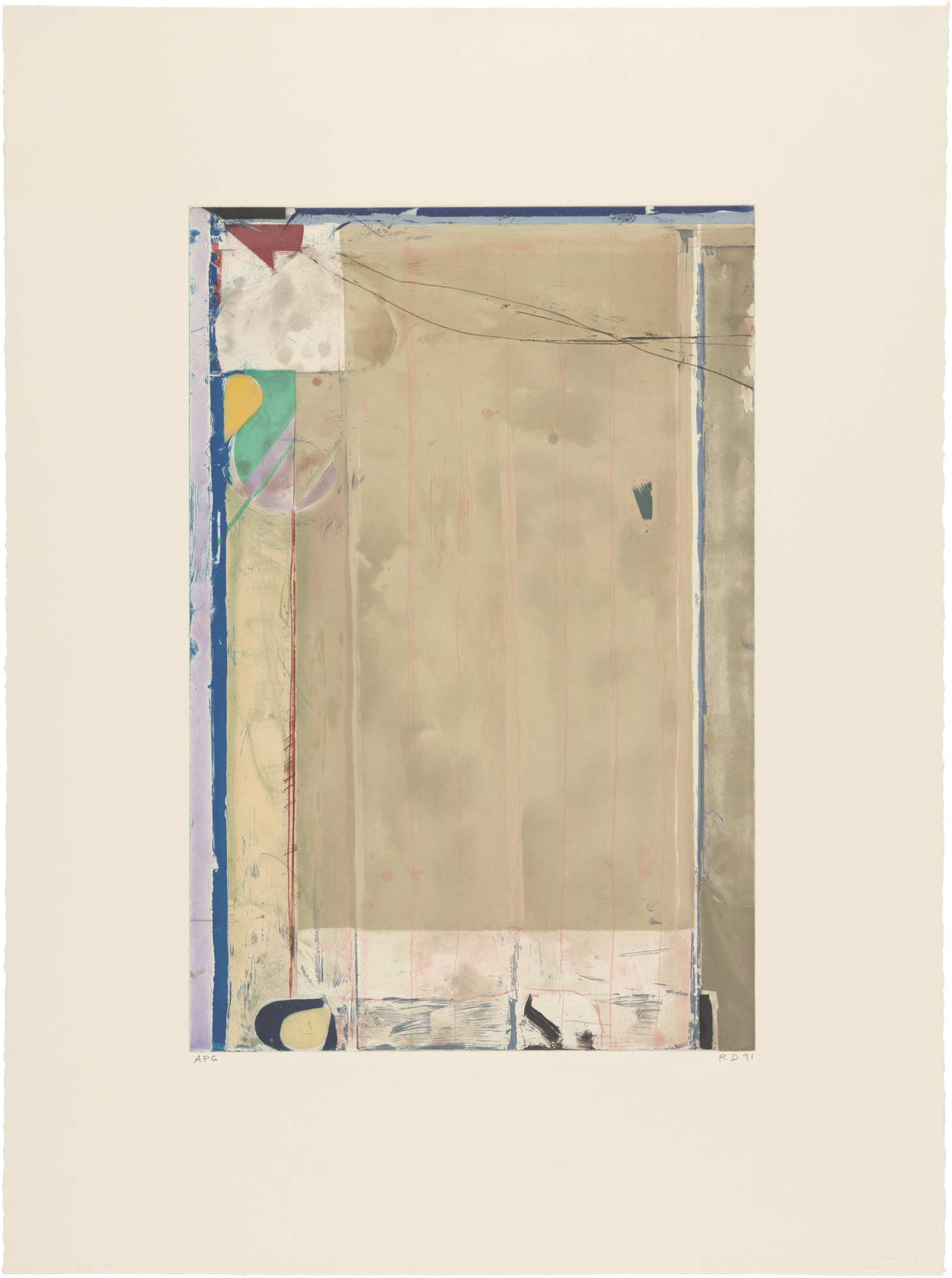
A mammoth undertaking
The landmark, exhaustive publication documents the complete print production of Richard Diebenkorn from 1946 to 1993—a mammoth task undertaken by the Foundation that unearthed previously unseen early prints produced in the 1940s, as well as unpublished prints made in the early 1960s, as well as working proofs for the acclaimed editions from the Ocean Park years.
In her preface, Liguori writes that at the outset of the effort to fully catalogue the artist’s prints in 2017, “we knew very well the later prints, such as the drypoints and etchings printed by Kathan Brown at Crown Point Press in the 1960s that comprise the book and portfolio 41 Etchings Drypoints (1965), and the color etchings from Crown Point in the 1980s, such as the celebrated editions Blue Surround (1982), Green (1986), and Touched Red (1991),” as well as “large lithographs made at Gemini in the 1980s—including Serge (1986) and Twelve (1906); however, she added, “the early monotypes, the lithographs from the late 1940s, and a single drypoint from 1948 shed new light on Diebenkorn’s early experimentations in the print medium.”
The first volume explores the history and role of printmaking in Richard Diebenkorn’s art practice and includes essays by Starr Figura, Curator in the Department of Drawings and Prints at the Museum of Modern Art and Karin Breuer, recently retired Curator in Charge of the Achenbach Foundation for Graphic Arts, Fine Arts Museums of San Francisco and an authority on the history of contemporary printmaking in the San Francisco Bay Area and in Los Angeles.
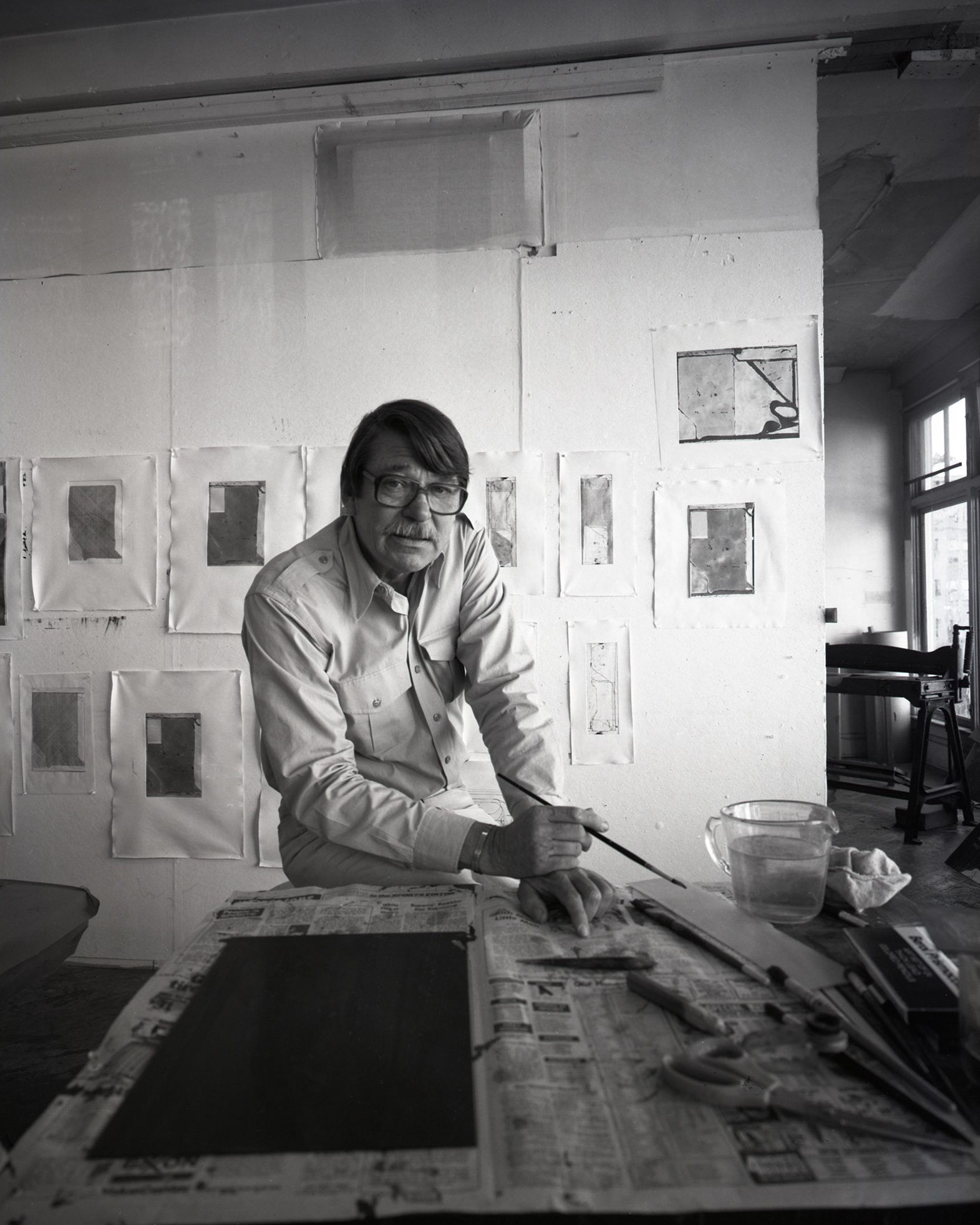
Figura, in her “Richard Diebenkorn, Printmaker,” explores the relationships among Diebenkorn’s work across all media and the “disruption and disorientation” that printmaking offered him. And she asserts that “although he is known to have remarked as late as 1976 that he did not consider himself to be a printmaker, by the end of his life he had in fact become one of the most prolific, accomplished, and technically inquisitive printmakers of the postwar period.” Breuer, who contributed eight, chronological essays that each focus on a period of time at one or more workshops, argues in her “Healdsburg, 1988–1993” that saturated colors and graphic drawings made in his last years “suggests an impetus to utilize his earlier Abstract Expressionist tendencies…had Diebenkorn lived, the prints that might have resulted would define a new chapter in his graphic achievement.
The first volume, in addition to biographies of his printmaking collaborators and a comprehensive exhibition history, includes a personal account of Diebenkorn’s life through the lens of his development as a master printmaker by Daisy Murray Holman, former Head of Archives at the Richard Diebenkorn Foundation, who processed the artist’s personal and professional correspondence, photographs, and ephemera. For instance, a moment in 1984 is made vivid, when, as Holman writes, the artist “begins a large series of lithographs at Gemini G.E.L. in Los Angeles. Diebenkorn works closely with supervising printer Serge Lozingot, whom Diebenkorn originally met at Tamarind over a decade previously. Sidney Felsen will remember, ‘Sometimes you just feel a certain printer would relate best to a certain artist and do it that way, sometimes just by who hasn’t worked with an artist for a while. Serge was one of these child printers in Paris, and he was Dubuffet’s printer. It was just a feeling that those two should work together.’”
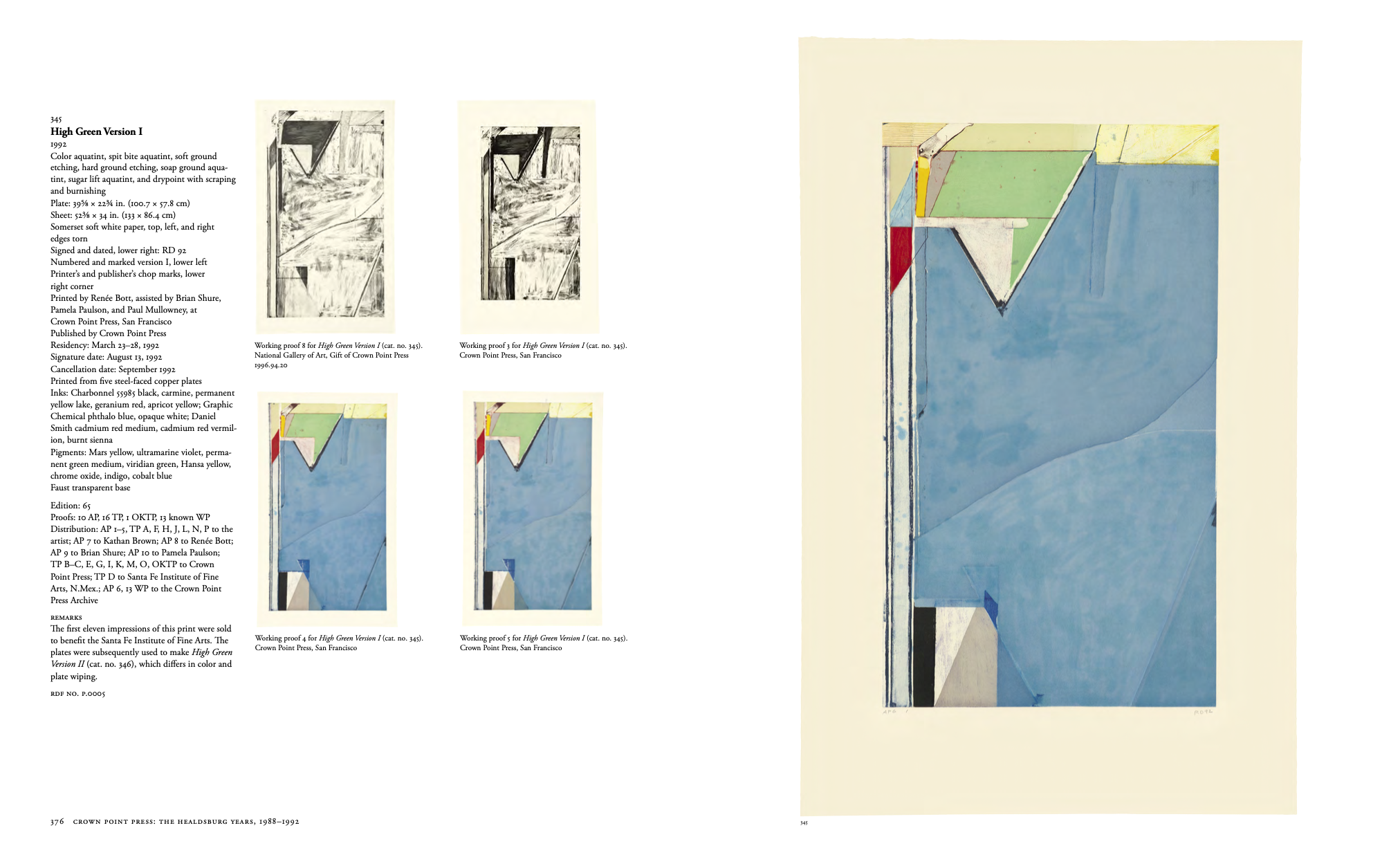
The second volume exhaustively documents the artist’s more than four hundred prints and includes full color illustrations. Works such as the beloved and vertical, sharply geometric High Green Version I (1992) are scaled to the entire page and include working proofs from both Crown Point Press and Crown Point Press Archives at the National Gallery that bring to the life the artist’s process, especially his penchant for using collage to compose his images and make adjustments to the copper plates.
Companion videos
The volumes are accompanied by interviews with printers conducted by Breuer. The videos—filmed by Richard Grant, recently retired Executive Director of the Richard Diebenkorn Foundation, and produced by Katharine James, Head of Digital and Public Engagement—are being released this spring @DiebenkornFoundation on Instagram and on diebenkorn.org.
A new film
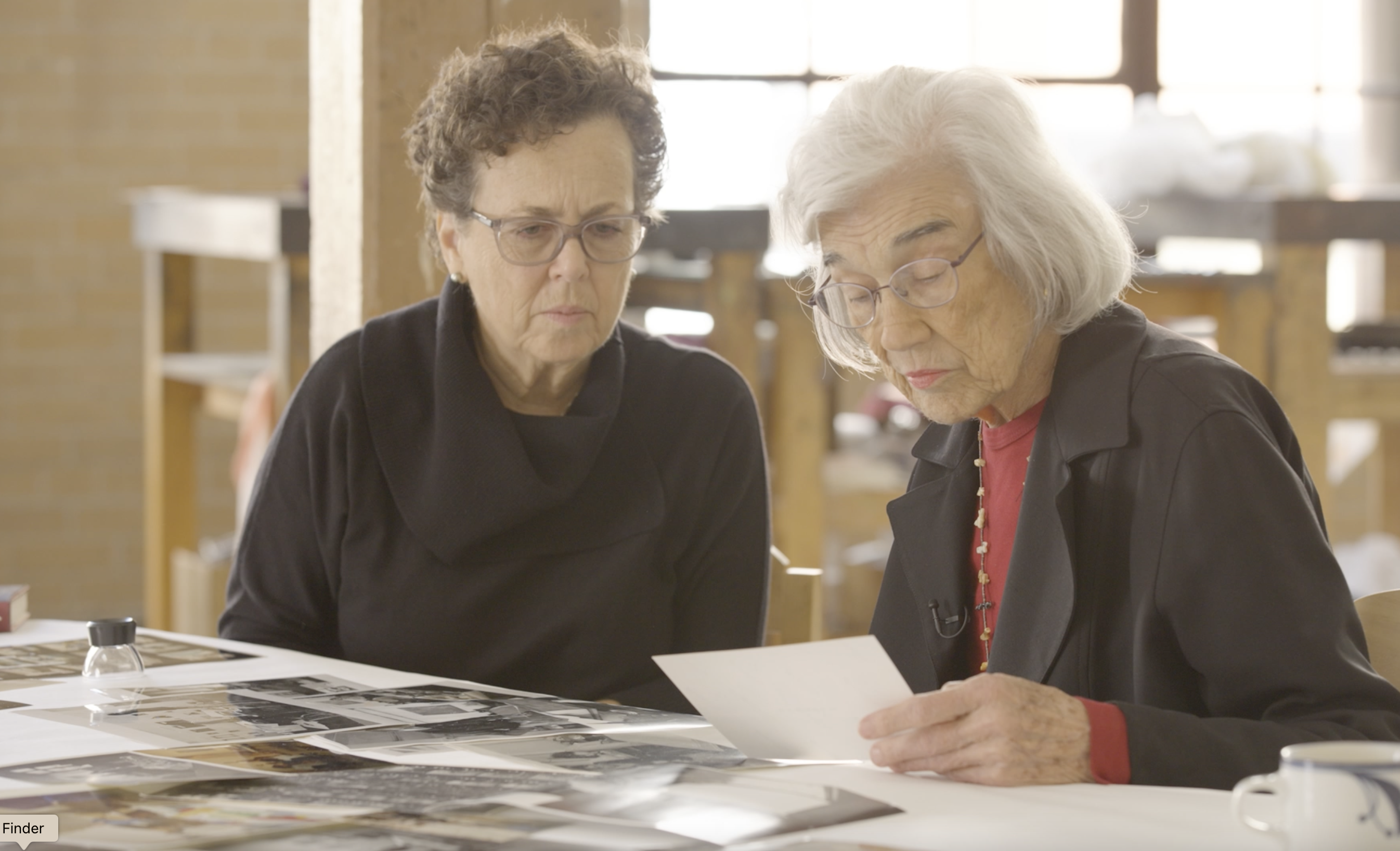
A new and special film with the late Kathan Brown and Valerie Wade, and together with Liguori, explores the artist’s history with the Press and the “golden era” of printmaking during the 1980s. Liguori, in a tender interview conducted with Brown in late 2023, unearths brightly hued paper scraps discovered during filming that the artist had used to construct an iconic print image. The film was produced at Crown Point Press by Matthew Pendergast, exclusively debuts on @diebenkornfoundation and @crownpointpress, and is available on diebenkorn.org and crownpoint.com.
For more information, and to pre-order, here.
Explore the title and talk with us on Instagram @diebenkornfoundation, @rizzolibooks, and @trifoliosrl.